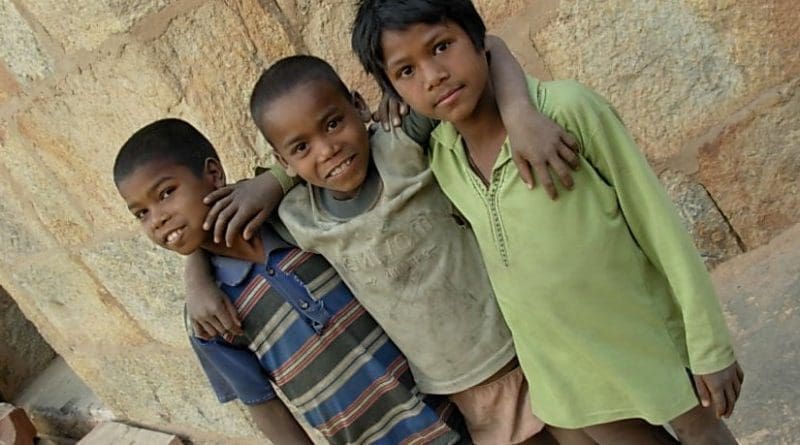Politics Of Caste In India: Challenges And Opportunities – Analysis
By IPCS
By Ashok Bharti*
Teachers have resumed teaching at Hyderabad Central University (HCU). However, a handful of students continue to sit in at the make-shift space created by Rohith Chakravarthy Vemula and his four expelled colleagues. Rohith Vemula was not the first victim of systematic exclusion, humiliation and expulsion that the students of Scheduled Castes, Scheduled Tribes, Notified/de-Notified Tribes and ethnic, religious and sexual minorities face in educational institutions – from the day they first enter a school till the day they complete even their highest levels of education. This phenomenon is also wide-spread in professional institutions of excellence such as the Indian Institutes of Management, the Indian Institutes of Technology, and medical colleges. It is prevalent in colleges and universities that dot the country. The HCU was no exception to this deep-rooted systematic exclusion that forced Vemula into unbearable haplessness, living in humiliation, and finally, pushed him to end his life.
Though not adequately represented, there are over 50 Dalit/Adivasi teachers at the HCU; but none stood up against the ordeal Vemula and his four peers suffered, compelling the latter to put up their struggle at Velivada by themselves. Although not in a correct proportion, there are enough numbers of non-teaching SC/ST employees too at the HCU, but the plight of these students did not move them. Other teachers and students are in thousands, but their conscience and higher callings did not evoke any response on the indignities heaped upon Vemula and his peers who stood up for freedom of ‘food, faith and ideas.’
These five students, active members of the Ambedkar Student Association, have not been the ‘stereotypical’ Dalit students. They were doing better than many non-Dalit students. They opposed draconian capital punishment, broke religious barriers among Hindus, Muslims and Christians, and forged an identity around Dr. Ambedkar – actions anathema for several Caste Hindus.
This nation-wide uproar that we witness is not because Rohith was the first victim of institutional exclusion, humiliations and apathy but because it has never been so straightforward between Ambedkarites believing in ‘Prabuddha Bharat’ or ‘Enlightened India’ and those believing in ‘Hindu Rashtra’. Therefore, Vemula’s tragic death is symptomatic, and poses challenges. India needs to confront these challenges and convert them to bigger opportunities.
What are the challenges? India faces the challenge of coming to the terms with the reality of caste. For long, most elites in all religions, Muslims and Christians included, have neglected/rejected caste and its associated behaviours such as endogamy, hierarchical exclusion, indignities, untouchability, and rampant discrimination. Dr. BR Ambedkar said, “caste has killed conscience.” Caste is violent institution.
Data compiled by the NACDAOR reveals that since 1991, over a staggering 6.74 lakh atrocities have been committed against people belonging to Scheduled Castes, with less than 3 per cent conviction rate. Can an aspiring world power like India neglect and overlook such a sorry state of impunity? This poses serious challenges not only to the right to live with dignity, but is also a potent threat to the growth story that India is writing.
Modern India cannot be built while its archaic values, especially such as the monster of caste, continue to haunt its people. Therefore, everyone must come forward to ‘annihilate caste’ in public and private life. And this problem cannot be effectively combatted unless the idea of a ‘Hindu Rashtra’ based on a Frankensteinian superiority complex and dominance of few Caste Hindus over the rest is fought by all the well-meaning people of this country.
Moreover, caste is not the only challenge. Most public institutions be it academic, administrative, law and order, judicial and even media, have their roots in colonial interests. Several were built to suppress ingenious talent, constrict creativity and limit competition, in order to perpetually keep the masses in a wretched state and maintain a ‘loot system’. India cannot be that ‘Chinese Tailor’ – that Dr. Ambedkar had compared colonial Britain with, in 1931 – who stitched a new coat with all patches and holes, like the worn out old coat given to him for measurement. As an independent country with limited resources and that is home to 17 per cent of the total world population, India needs to build institutions that promote, encourage and nurture talent, amplify creativity, and make its large population capable of surviving competition with values of social, economic and political justice, equal dignity, and righteous sharing.
Academia, administration, law and order systems, judiciary and executive, all need to be sensitive and respond quickly in discharging justice in order to prevent prolonging the suffering that a significant number of the country’s citizens currently experience. India requires to keep its exclusionary system in perspective, and create institutional mechanisms that are inclusive in concept, design, and practice.
In 2016, when the nation will celebrate the 125th birth anniversary of Dr. BR Ambedkar, the principal architect of the Indian constitution, we must stop harping on the archaic ‘Dronacharyan’ values that punish and exclude people on the basis of their birth, origin, sexual and ideological orientations. Speeding up the inclusion of excluded Dalits, Adivasis and other minorities is the key to building a humane, dignified and developed India.
* Ashok Bharti
Chairman, National Confederation of Dalit Adivasi Organisations (NACDAOR), & Kabir Chair on Social Conflict, IPCS
Email: [email protected]

